Published in the Ocean Watch column, Honolulu Star-Advertiser © Susan Scott
September 14, 2007
Nearly three years ago I left Honolulu in my 37-foot sailboat, Honu, with the primary goal of seeing South Pacific marine life.
I imagined long lazy months of sailing with seabirds, swimming with fishes and drifting with plankton.
But as I traveled my focus changed. I concentrated on keeping Honu’s systems working, navigating around reefs and dropping anchor, or tying up, in secure places. I went for safety, and if the marine animals showed up during those undertakings, fine. If not, oh well. The boat was my life raft and got priority.
Now I’ve sailed Honu as far north on Australia’s Great Barrier Reef as I will go, to Lizard Island. I arrived intact, all the boat’s systems are working and the anchorage is excellent. Finally, here, I can let go.
Relaxed, I am taking my time exploring and have come to a grand conclusion: I’ve sailed into the heart of the original dream.
Lizard Island is a national park, World Heritage Area and is sacred to the Dingiil Aboriginal people. A world-class marine biology research station is located here, as is an exclusive resort. The protected anchorage Watson’s Bay is famous among boaters.
The reason for all this popularity is the wildlife. Eleven kinds of lizards, 40 bird species and a camp of black fruit bats grace the island group (Lizard plus five islets).
Green and loggerhead turtles nest on several of 20 white-sand beaches, and Lizards’ waters host some of the most colorful and densely inhabited coral reefs in the world.
I have a glorious month alone here, and each day is an adventure all its own.
When I jumped in the water to check my anchor, I discovered Honu had a 3-foot-long remora, or suckerfish, stuck to her hull.
These gray scavengers have suction cups on the back of their heads and stick themselves to whales, sharks and boats when they can to catch scraps and leftovers.
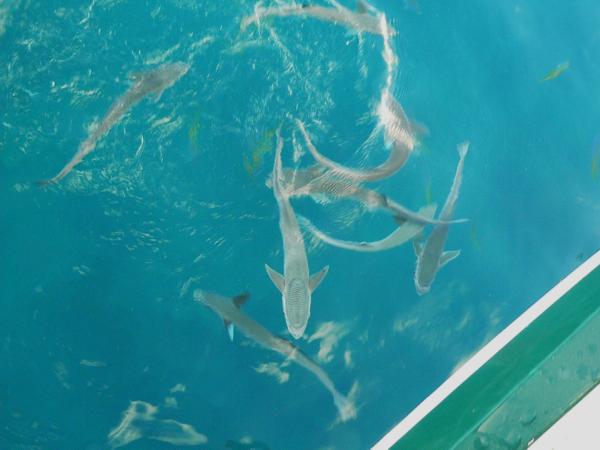
Later I heard splashing sounds, and from the deck I saw the fin and tail of a medium-size shark swirling with several remoras.
I don’t know if the shark was pursuing prey or if the remoras were squabbling over sticking to the shark, but the result was sure exciting.
Honu also shelters a school of juvenile damselfish. At least 100 of these inch-long youngsters have taken up residence between the rudder and boarding ladder, a spot hard for the neighborhood bullies, the trevally, to strike.
Beneath the boat, blue-spotted stingrays root in the sand for snails and other invertebrates. Above, silver gulls with lipstick-red bills and orange legs squabble for the privilege of perching on my outboard motor.
And I haven’t left the boat yet.
When I do, I like to hike up Cook’s Look, a 3-mile (round trip) trek to the island’s highest point. Capt. James Cook climbed this 1,000-foot-high hill to seek a way out of the maze of reefs that trapped him. From there he saw a way out, now called Cook’s Passage.
When I get back hot and sweaty, I go snorkeling on any one of dozens of crowded reefs, made by hundreds of coral species and inhabited by billions of fish and invertebrates.
Lizard Island’s views, colors, reefs, animals and anchorage are exactly what I had in mind when I decided to sail south three years ago. That it eluded me for so long makes it all the sweeter.
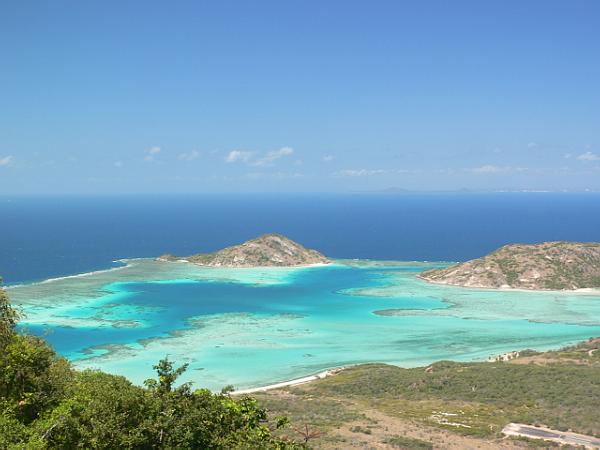 Blue Lagoon, Lizard Islan, south side, from Cook’s Lookout.
Blue Lagoon, Lizard Islan, south side, from Cook’s Lookout.
 Chart of Lizard Island
Chart of Lizard Island
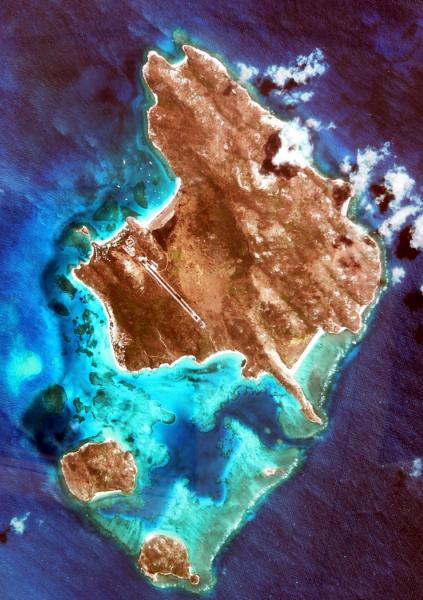 Aerial view of Lizard Island
Aerial view of Lizard Island
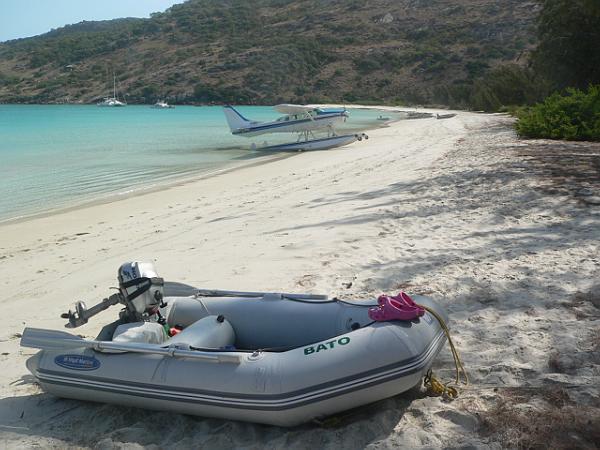 Bato – Susan’s dinghy
Bato – Susan’s dinghy
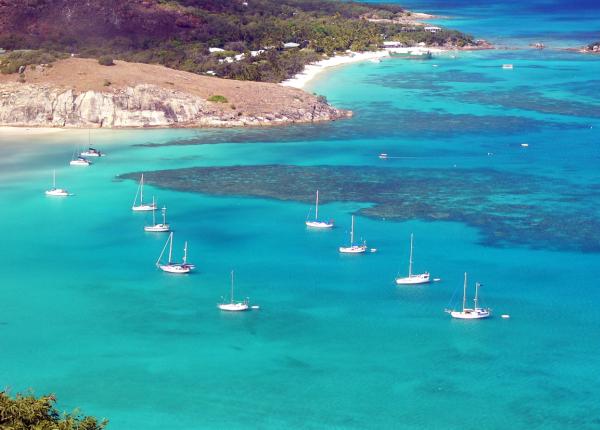 Watson’s Bay – Honu is in the middle row, second from the top.
Watson’s Bay – Honu is in the middle row, second from the top.
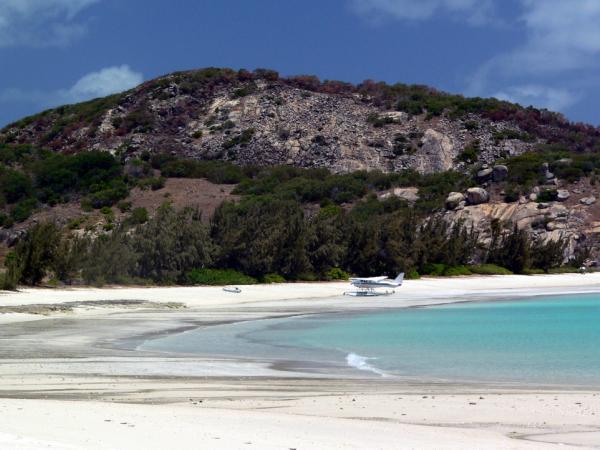 Watson’s beach
Watson’s beach